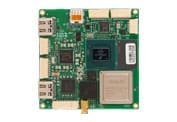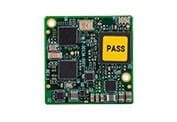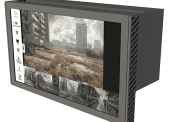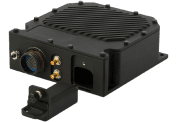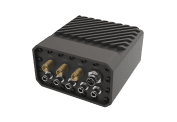Flying drones have become a common sight, now regularly used in a wide range of industries for tasks such as surveillance, inspection, delivery, and more. With the advent of artificial intelligence (AI), drones can now perform tasks that were once impossible or too difficult for humans alone. The ability of modern-day drones to capture, stream, process, and interpret high-quality video in real time has emerged as a key technology component that is driving the market forward. According to a report by MarketsandMarkets, the market size for drones with AI is expected to grow from $2.1 billion in 2022 to $6.5 billion by 2027.
One of the most promising AI applications for drones is prediction. In this blog, we will explore the use of drones with AI for prediction, the benefits it brings to various industries, and the challenges that come with it.
What is AI prediction with drones?
AI prediction with drones involves using machine learning algorithms, video analytics, and other data gathered by drones to predict events or outcomes. There are many use cases for this AI-based technology:
Security
AI-equipped drones serve as a perfect complement for ground security teams looking to predict security threats and monitor crowds in real time. For example, drones can be equipped with facial recognition technology to identify individuals who pose a security risk, such as terrorists or wanted criminals. They can also be used to monitor large events and public spaces to detect and prevent criminal activity. Additionally, drones can be used to survey and monitor critical infrastructure, such as power plants or airports, to detect potential security breaches and improve response times.
Natural Disasters
A drone equipped with AI algorithms and sensors can be used to predict natural disasters like floods, earthquakes, and wildfires. By analyzing data such as temperature, humidity, wind speed, and direction, the drone can provide early warnings to people in affected areas, giving them time to evacuate or take other necessary actions. In a project conducted by Penn State, drones with AI are being used to predict the likelihood of a landslide in a mountainous region. The study found that the drones could predict landslides with an accuracy of up to 97%.
Agriculture
AI prediction with drones can also be used in agriculture to predict crop yields and identify areas of the field that need attention. Drones equipped with multispectral cameras can gather data on soil moisture, crop health, and other environmental factors that affect crop growth. Armed with this data, farmers can make smarter decisions about planting, irrigating, and harvesting, resulting in higher yields and better use of resources. The enormous potential is why the global precision agriculture market size is expected to reach $19.24 billion by 2030. Drones with AI are likely to play a significant role in the growth of this market.
Infrastructure maintenance: Drones equipped with AI algorithms and sensors can be used to inspect and predict the maintenance needs of infrastructure such as bridges, buildings, and highways. Traditional security measures such as patrols and fixed cameras can only cover a limited area, whereas drones can cover a much larger area in a shorter time frame. In the energy sector, drones with AI for predictive maintenance are expected to result in cost savings of up to 50% compared to traditional inspection methods.
Healthcare: Drones equipped with AI algorithms can deliver medical supplies to remote areas that are difficult to access by traditional means. This can be particularly useful in emergency situations, such as natural disasters or pandemics, where access to medical supplies and personnel can be limited. Drones can also be equipped with sensors and cameras to monitor and predict the spread of infectious diseases, such as COVID-19. By analyzing data on factors such as population density and movement, drones can help predict outbreaks and support more effective public health responses.
These are just a few examples of the many use cases for drones with AI for prediction. As more and more industries discover the benefits of drones’ ability to collect unlimited aerial data and provide real-time visibility for future predictions, it is likely that more applications will emerge.
Benefits of AI prediction with drones

AI prediction with drones brings numerous benefits to various industries. Here are a few examples:
Improved safety: By predicting events such as natural disasters, drones can help people evacuate in time, reducing the risk of injuries and fatalities. Similarly, in industries such as mining and construction, drones can predict potential hazards and prevent accidents.
Increased efficiency: By predicting crop yields, drones can help farmers improve their use of resources and increase productivity. Similarly, in industries such as logistics and delivery, drones can predict traffic patterns and optimize routes, resulting in faster and more efficient delivery.
Cost savings: By predicting potential problems before they occur, drones can help companies save money on repairs, maintenance, and downtime. For example, in the energy sector, drones can indicate when equipment is likely to fail, allowing for proactive maintenance and avoiding costly repairs.
Challenges of AI prediction with drones
While AI prediction with drones has numerous benefits, it also comes with several challenges, such as:
Data quality: The accuracy of predictions depends on the data quality used to train the AI algorithms. If the data is outdated, incomplete, or biased, the predictions may be inaccurate or unreliable.
Regulations: The use of drones is regulated by various authorities, and the regulations are constantly evolving. Companies using drones for prediction must stay up to date with the latest regulations and ensure that they comply with them.
Privacy concerns: Drones equipped with sensors and cameras can collect large amounts of data, raising privacy concerns. Companies using drones for prediction must ensure that they have appropriate data security measures in place to protect sensitive information.
AI-Based Drones: Revolutionizing Prediction
AI prediction with drones has the potential to transform various industries, from agriculture to healthcare to energy. By using AI algorithms and video technology to analyze data gathered by drones, companies can make more informed decisions, improve safety, increase efficiency, and save money. However, the technology also comes with challenges, such as data quality, regulations, and privacy concerns, which must be addressed to ensure its successful implementation. When addressed, use cases for AI-based drones will soar. The sky’s the limit.

